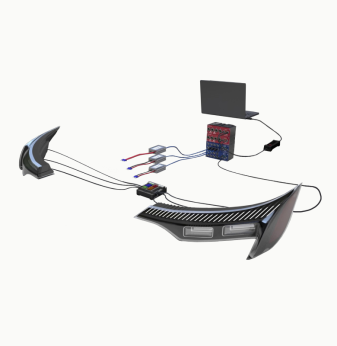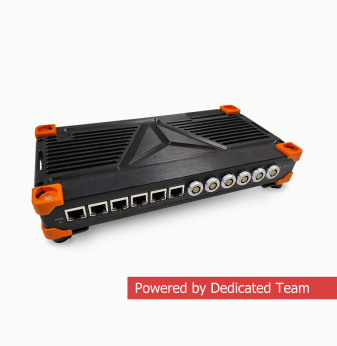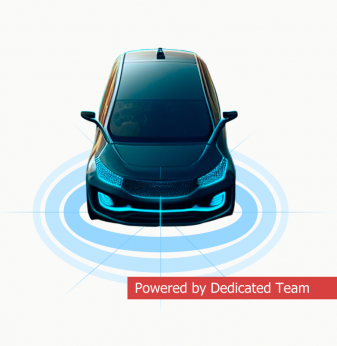The True Cost of Not Modernizing Legacy Embedded Systems

Introduction: Legacy Systems Still Work—But At What Cost?
Many embedded systems built 10–20 years ago are still functioning. But while they may continue to “do the job,” the hidden costs of operating outdated platforms increase over time—and can become a serious liability.
From rising maintenance expenses to missed innovation opportunities and cybersecurity risks, sticking with legacy embedded software and hardware can prevent companies from scaling, complying with modern standards, and staying competitive.
In this article, we explore the real costs of not modernizing embedded systems, backed by industry insights and examples from projects at Promwad.
1.Rising Maintenance Costs
Maintaining outdated embedded platforms—especially those running on discontinued chips or legacy software stacks—requires increasingly scarce and expensive expertise.
According to global IT market estimates, enterprises spend over 70% of their IT budgets maintaining existing legacy systems, some of which are decades old. For embedded product companies, this translates into higher engineering costs for bug fixing, driver patching, and interface support.
What this means in practice:
- Higher cost per hour for legacy-skilled developers
- Frequent patching instead of feature development
- Dependency on obsolete tools and toolchains
2.Security Risks and Non-Compliance
Legacy embedded systems are often vulnerable to modern cyber threats. They may lack:
- Secure boot
- Encrypted storage
- Secure OTA updates
And they rarely comply with updated regulations such as IEC 62443, GDPR, or ISO 21434 in automotive and industrial systems.
The risk:
- Potential fines for non-compliance
- Data breaches in medical, automotive, or IoT systems
- Compromised customer trust and product recalls
3.Integration Bottlenecks
Outdated systems don’t play well with modern tools, APIs, or connectivity protocols. They can’t support:
- RESTful or GraphQL interfaces
- Real-time edge data exchange (MQTT, OPC UA)
- Standard DevOps workflows
This makes it hard to connect legacy systems to cloud platforms, analytics dashboards, or mobile apps.
Result: Manual workarounds, poor UX, or delayed product rollouts.
4.Missed Innovation Opportunities
Embedded AI, edge computing, energy-efficient MCUs, and real-time wireless protocols like Matter and Thread are driving a new wave of products.
But legacy systems often lack the memory, CPU, and architecture flexibility to adopt these technologies.
Staying with legacy can mean:
- No AI inference at the edge
- No support for next-gen connectivity
- Inability to expand firmware features
5.Shortage of Legacy Talent
As developers retire or shift to modern stacks, it’s becoming harder to find people who can maintain legacy systems written in Pascal, VB, or outdated versions of C/C++. Likewise, hardware teams familiar with old silicon and toolchains are harder to recruit.
Impact: Increased costs, longer project timelines, or reliance on freelancers without long-term continuity.
6.Unexpected Downtime and Hardware Failures
Legacy systems are more likely to fail due to:
- Lack of available spare parts
- Aging connectors and memory
- Discontinued silicon with no support
This can halt production lines or customer deployments, causing unplanned downtime and increased support tickets.
Case Example:
A Promwad client in industrial automation experienced recurring failures in their legacy PLCs. After a hardware-software redesign with modern SoMs, they reduced support incidents by 60%.
7.Strategic Inflexibility
Your product may work—but if you can’t update it easily, react to market shifts, or implement new use cases (e.g., remote diagnostics or OTA updates), you’re stuck.
Competitors building on modern platforms can:
- Release updates faster
- Customize per client
- Integrate AI or IoT with lower effort
Being locked into legacy becomes a strategic weakness over time.
Table: Summary of Hidden Costs in Legacy Systems
| Risk Area | Consequence |
| Maintenance Costs | High cost of upkeep, minimal innovation |
| Cybersecurity Gaps | Vulnerability to attacks and data leaks |
| Integration Limitations | Poor interoperability, no support for modern protocols |
| Innovation Barriers | Incompatibility with AI, edge, or low-power systems |
| Talent Shortage | Expensive and slow updates due to limited expertise |
| Reliability & Failures | Downtime, customer complaints, lack of vendor support |
| Strategic Inflexibility | Inability to respond to market or regulatory changes |
When Should You Modernize?
Consider starting a modernization project if:
- Your support costs exceed 20% of your dev budget
- Security audits identify critical vulnerabilities
- Your time-to-market lags behind competitors
- Your hardware is near EOL or discontinued
Even partial modernization—like refactoring firmware, switching to a modern RTOS, or adopting modular hardware—can unlock long-term savings.

How Promwad Can Help
We provide full-cycle modernization services for embedded and electronics companies:
- Legacy system audit and risk assessment
- Platform migration and re-engineering
- Custom BSPs and Linux kernel upgrades
- Modular redesign and edge-ready architectures
Whether you need to transition away from legacy chipsets, refactor critical firmware, or rebuild your architecture with scalability in mind — our cross-functional teams can support you.
Real-World Examples of Legacy Risks in Different Industries
Industrial Automation
A manufacturing firm operating legacy PLCs and SCADA systems based on proprietary protocols faced rising downtime and interoperability issues with new sensors. Modernizing to a Linux-based control platform with MQTT reduced integration times and enabled predictive maintenance.
Medical Devices
A diagnostics company running Windows CE on patient monitoring hardware was unable to meet updated cybersecurity and data retention standards. After migrating to an embedded Linux system with encrypted storage and secure boot, the client successfully passed IEC 62304 and GDPR audits.
Automotive Electronics
An OEM using legacy microcontrollers for infotainment systems couldn’t support new connectivity protocols like Android Auto and CarPlay. Modernizing the hardware to a modular platform with an up-to-date BSP enabled third-party integration and faster firmware iteration.
Cost Comparison: Maintaining vs. Modernizing
| Cost Category | Legacy System (Annual) | Modernized System (Initial + 3-Year Avg.) |
| Developer labor | $300K+ | $180K |
| Downtime & support | $120K | $30K |
| Compliance & audit | $75K (penalties) | $25K (certification, proactive) |
| Innovation losses | High (opportunity cost) | Low (enabler for growth) |
| Total Cost of Ownership | $500K+ annually | ~$250K over 3 years |
Final Thoughts: Waiting Is More Expensive Than Modernizing
Modernization may feel like a big step — but doing nothing can cost more in the long run. Financially, strategically, and operationally, legacy embedded systems can hold your business back.
By planning ahead and modernizing gradually, you can reduce risks, extend product lifecycle, and unlock your roadmap’s full potential.
Let’s explore how to bring your legacy systems into the future — together.
Our Case Studies





